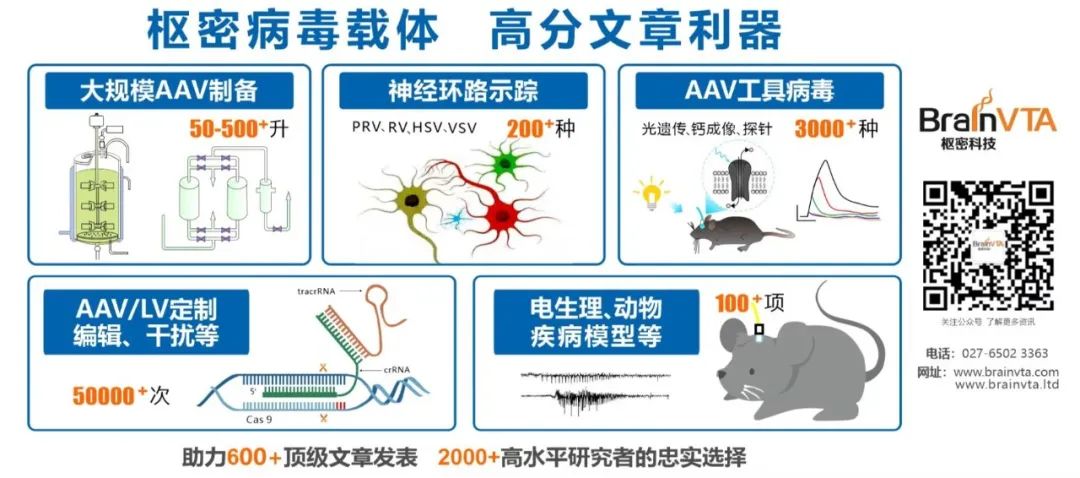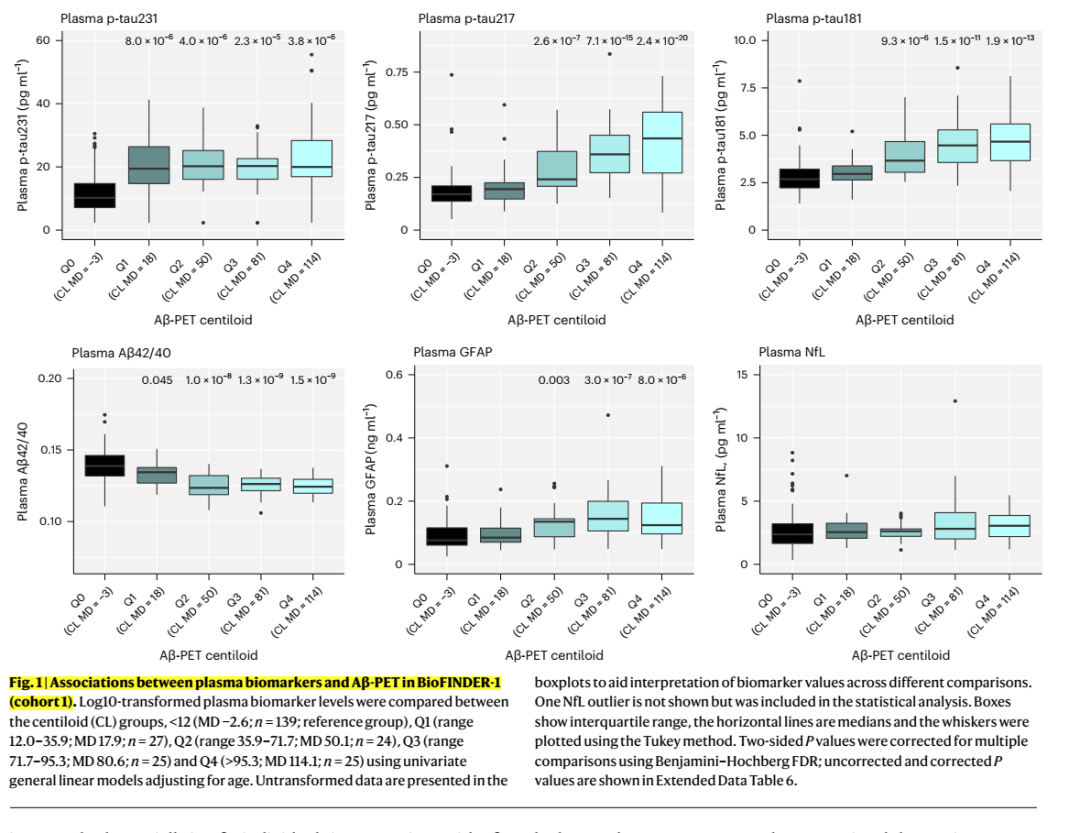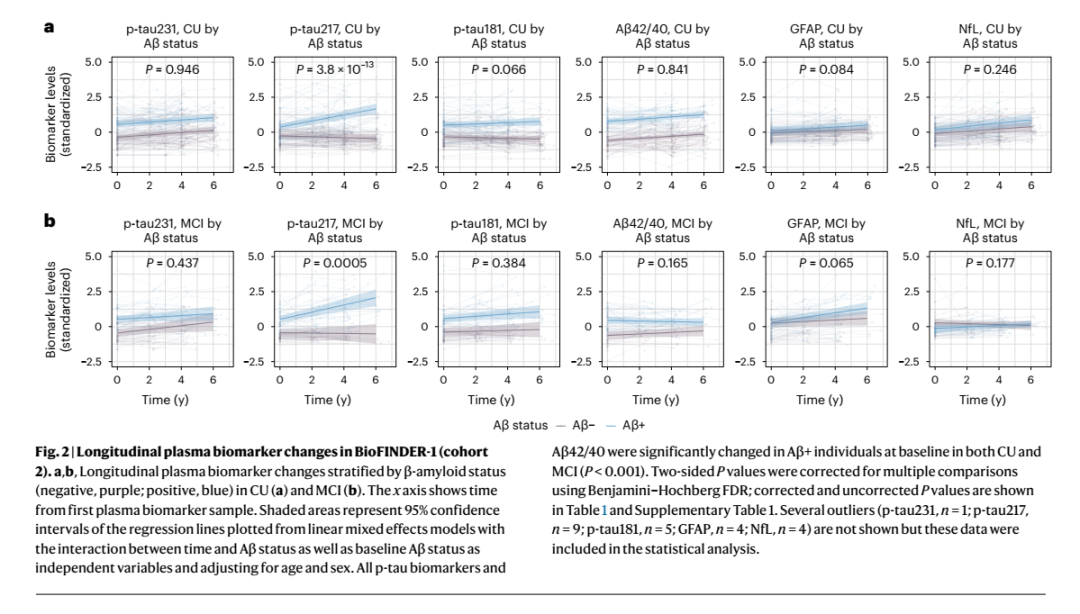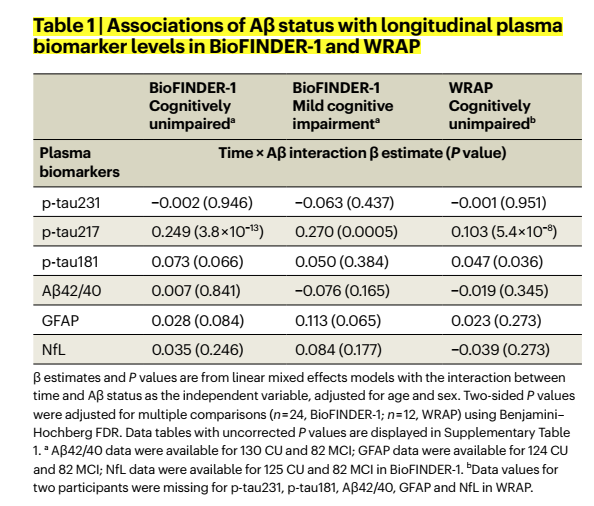AD研究重磅:血浆p-tau217是临床前和前驱期AD疾病进展的优质标志物
时间:2022-12-12 17:59:59 热度:37.1℃ 作者:网络
 中文摘要
中文摘要
表征阿尔茨海默病(AD)病理的血液生物标志物在疾病的临床前和症状阶段都会发生改变。独特的生物标志物可能是识别AD病理或监测疾病进展的最佳选择。与疾病过程中认知变化和萎缩相关的血液生物标志物可用于临床试验的设计和执行,以用于检验干预措施是否有效,从而加快有效治疗的开发。当疾病修饰治疗被批准使用时,有效的基于血液的生物标志物也可能会为临床实践中的治疗实施和管理提供信息。在BioFINDER-1队列中,血浆磷酸化(p)-tau231和淀粉样蛋白Aβ42/40比值在淀粉样蛋白病理的较低阈值时变化更大。然而,在纵向改变上,只有p-tau217在疾病的临床前和症状阶段才表现出与4-6年时的淀粉样蛋白沉积相关的依赖性变化,而在p-tau231、p-tau181、淀粉样蛋白Aβ42/40、胶质酸性纤维蛋白或神经丝轻链蛋白中没有观察到这种变化。此外,只有p-tau217的纵向增加与临床前AD的临床恶化和脑萎缩相关。在一个独立的队列中,p-tau217的选择性纵向增加及其与认知衰退和萎缩的相关性得到了独立地验证(威斯康星阿尔茨海默病预防登记研究)。这些发现支持血浆生物标志物与疾病发展的差异关联,并支持p-tau217作为临床前和前驱期AD疾病进展的替代标志物,这将对新的疾病修饰治疗的研发具有影响。
英文摘要
Blood biomarkers indicative of Alzheimer's disease (AD) pathology are altered in both preclinical and symptomatic stages of the disease. Distinctive biomarkers may be optimal for the identification of AD pathology or monitoring of disease progression. Blood biomarkers that correlate with changes in cognition and atrophy during the course of the disease could be used in clinical trials to identify successful interventions and thereby accelerate the development of efficient therapies. When disease-modifying treatments become approved for use, efficient blood-based biomarkers might also inform on treatment implementation and management in clinical practice. In the BioFINDER-1 cohort, plasma phosphorylated (p)-tau231 and amyloid-β42/40 ratio were more changed at lower thresholds of amyloid pathology. Longitudinally, however, only p-tau217 demonstrated marked amyloid-dependent changes over 4-6 years in both preclinical and symptomatic stages of the disease, with no such changes observed in p-tau231, p-tau181, amyloid-β42/40, glial acidic fibrillary protein or neurofilament light. Only longitudinal increases of p-tau217 were also associated with clinical deterioration and brain atrophy in preclinical AD. The selective longitudinal increase of p-tau217 and its associations with cognitive decline and atrophy was confirmed in an independent cohort (Wisconsin Registry for Alzheimer's Prevention). These findings support the differential association of plasma biomarkers with disease development and strongly highlight p-tau217 as a surrogate marker of disease progression in preclinical and prodromal AD, with impact for the development of new disease-modifying treatments.







